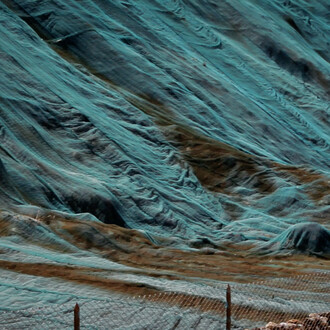For most of history, humans expressed ethical ideas through stories, and of all these the story of Adam and Eve has been perhaps the most powerful and enduring. For three millennia, in Jewish, Christian, and Muslim worlds, people reasoned ethically through the seedpod of this—even to early audiences—unreasonable tale: the first man and woman, formed by God at the apex of the world’s creation, disobey their creator by eating a forbidden fruit, are punished by sickness, hardship, and death, and pass their curse to the future human species.
From the early Christian period onward, in countless thought-provoking forms, visual artists endeavored to picture this story. In doing so, they had to make certain practical decisions, each requiring reasoning about the unreasonable: for example, which moment in the story to show as the decisive one, and how to display innocent, paradisiacal nudity to a fallen audience stained by shame and lust. Designed for a course in “Ethical Reasoning” offered by Harvard College’s Program in General Education, this installation features works from the Harvard Art Museums and Houghton Library. It explores how artists from the Renaissance to the modern era met the challenges of a foundational story.
These challenges were partly aesthetic, as artists labored to create ever livelier and better proportioned nudes. But there were ethical challenges as well. Picturing what happened in Eden, artists hinted at why. And they pondered imponderables that resulted from the crime, such as disease, toil, gender inequality, and death. European encounters with New World inhabitants raised new questions about nudity, human diversity, and the universality of the biblical story itself. Including works by Dürer, Rembrandt, Blake, Munch, and Beckmann, this installation is both the history of an image and a miniature history of Western art.
This installation’s related course is taught by Joseph Koerner, Victor S. Thomas Professor of the History of Art and Architecture; and Stephen Greenblatt, John Cogan University Professor of the Humanities, Harvard University.
The University Teaching Gallery serves faculty and students affiliated with Harvard’s Department of History of Art and Architecture. Semester-long installations are mounted in conjunction with undergraduate and graduate courses, supporting instruction in the critical analysis of art and making unique selections from the museums’ collections available to all visitors.
This installation is made possible in part by funding from the Gurel Student Exhibition Fund and the José Soriano Fund. Modern and contemporary art programs at the Harvard Art Museums are made possible in part by generous support from the Emily Rauh Pulitzer and Joseph Pulitzer, Jr., Fund for Modern and Contemporary Art.
















